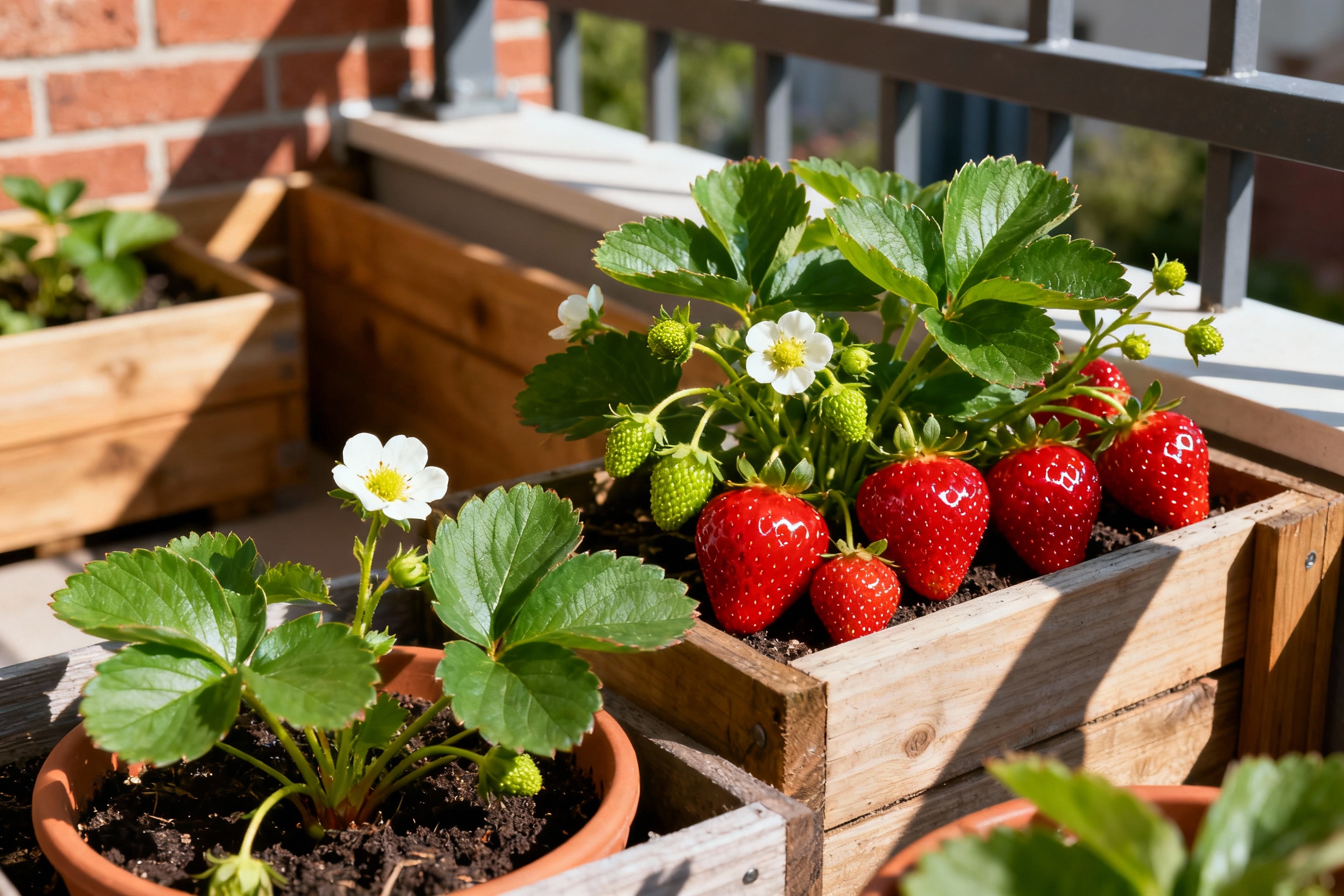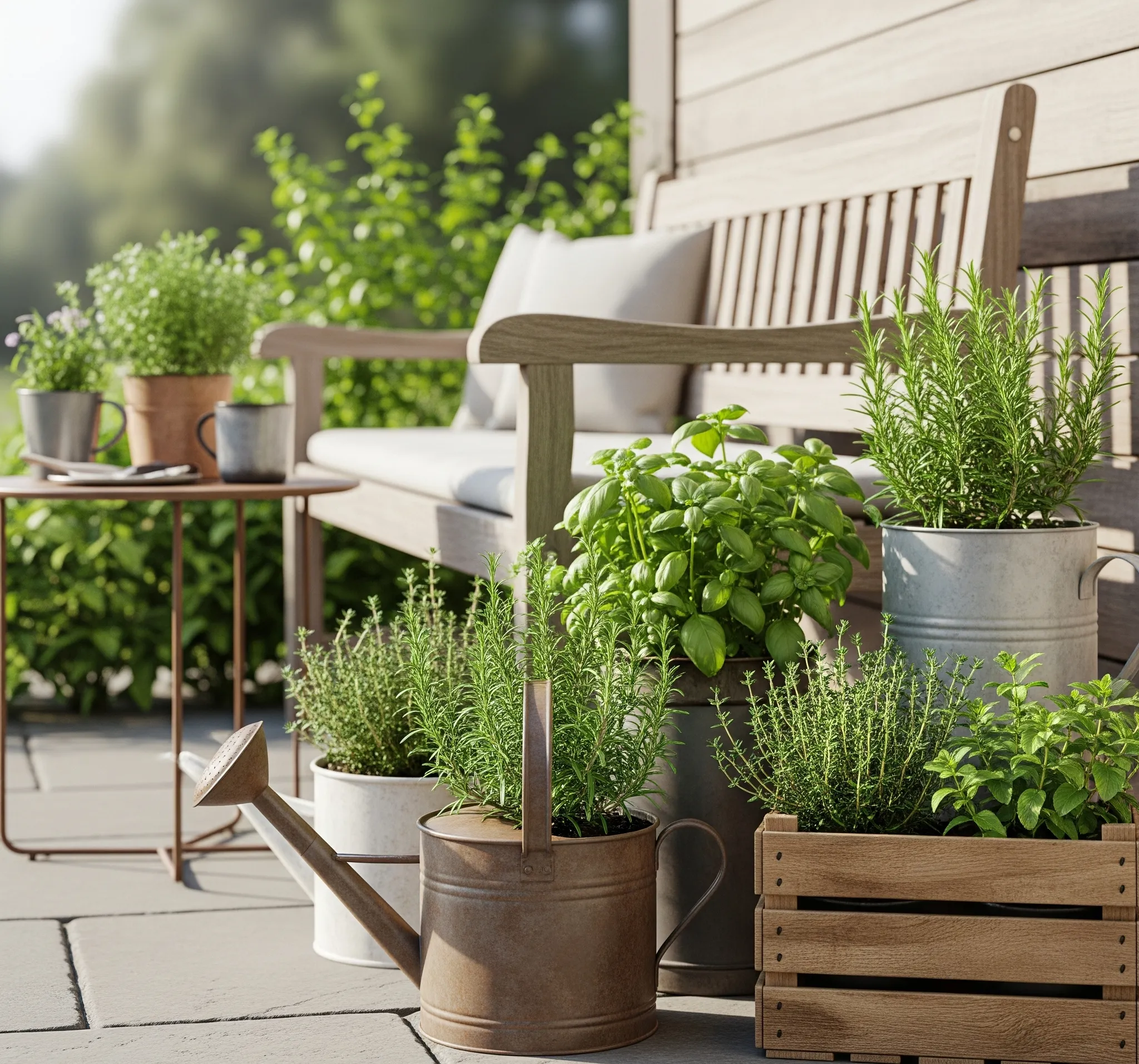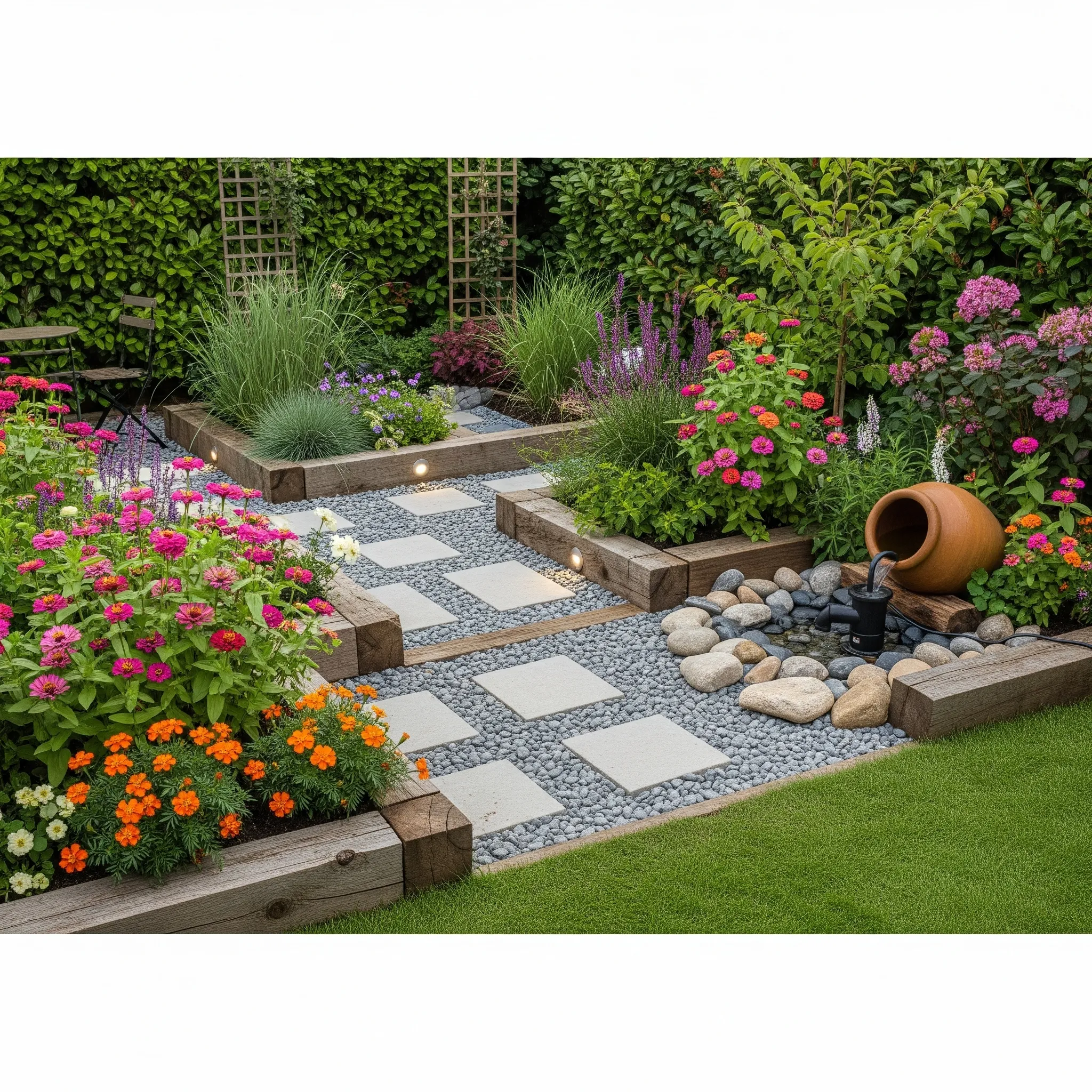You want strawberries so sweet they taste like summer on a spoon? Good news: you don’t need a farm or even a yard. You can grow them in a pot, a hanging basket, or a tiny patch of soil and still get a legit harvest.
Give them sun, decent soil, and a little attention, and they’ll pay you back with bowls of juicy berries. Ready to grow the best snack you’ve ever walked outside to grab?
Pick Your Strawberry Type (This Matters!)
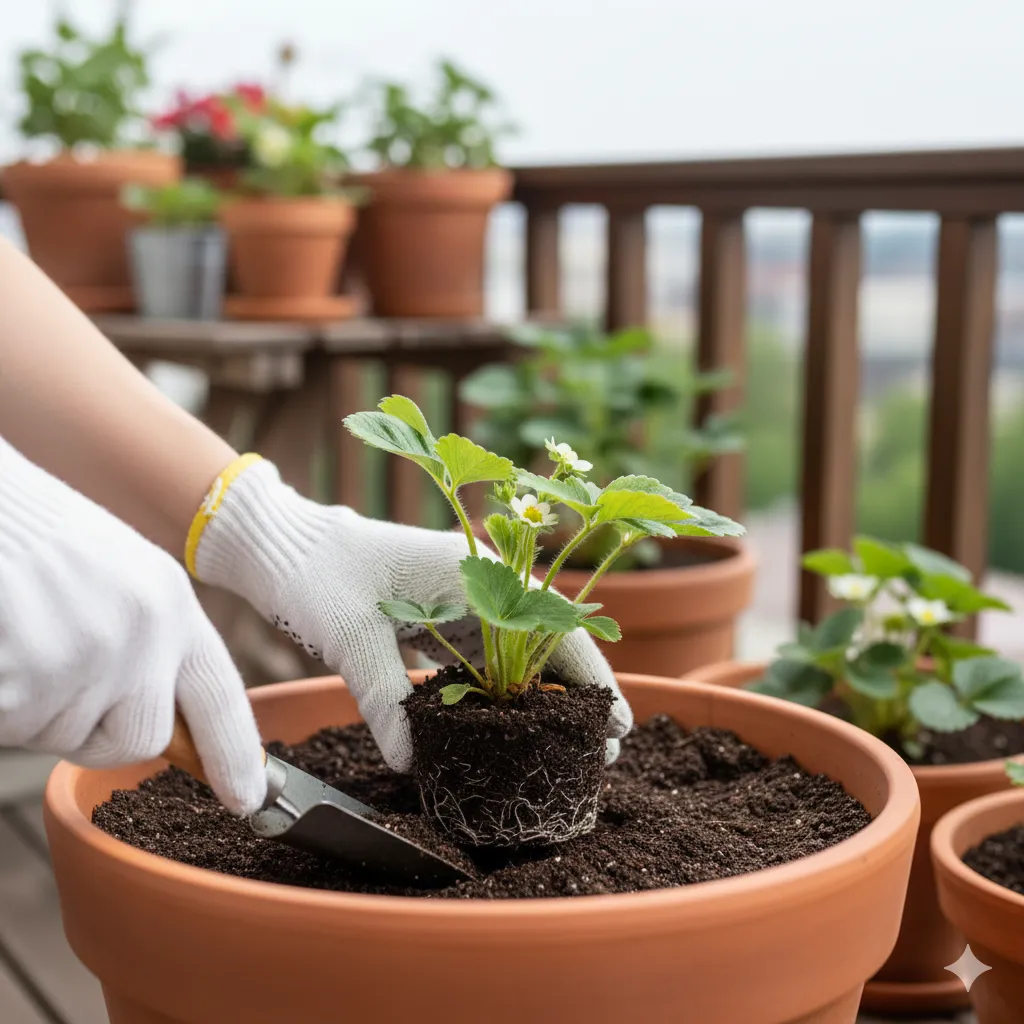
Not all strawberries behave the same, and planting the right kind makes everything easier. You’ve got three main types, and yes, strawberries have personalities.
June-bearing
These produce one big crop in late spring/early summer.
They deliver lots of berries all at once. Great if you want to make jam, freeze, or throw a strawberry party. Popular picks: ‘Chandler’, ‘Allstar’, ‘Honeoye’.
Everbearing
They give you two to three smaller flushes—spring, midsummer, and fall.
Not massive harvests, but steady and predictable. Try ‘Everest’ or ‘Quinault’.
Day-neutral
These flower and fruit as long as temps sit between 40–85°F (4–29°C). Perfect for containers and impatient people (hi).
Go for ‘Albion’, ‘Seascape’, ‘Mara des Bois’ for flavor that smacks. Quick tip: For balconies and pots, pick day-neutral or everbearing. You’ll snack all season without needing farm vibes.
Sun, Space, and Setup: Where They’ll Actually Thrive
Strawberries love sun. Like, a lot.
- Sunlight: Aim for 6–8 hours of direct sun daily.
More sun = sweeter berries. Shady corners grow leaves, not dessert.
- Soil: Loose, well-draining, slightly acidic (pH 5.5–6.5). They hate soggy feet.
- Spacing in ground: 12–18 inches apart with 18–24 inches between rows.
Leave space for runners to spread.
- Containers: Use at least a 10–12 inch wide pot per plant, or a 12–16 inch hanging basket for 2–3 plants.
IMO: Hanging baskets with day-neutral varieties are peak lazy luxury—berries at eye level, no slugs.
Container Mix That Works
Use a high-quality potting mix, not garden soil. Blend like this:
- 2 parts peat or coco coir (holds moisture)
- 1 part perlite (drainage)
- 1 part compost (food)
Add a slow-release organic fertilizer at planting and you set yourself up for months.
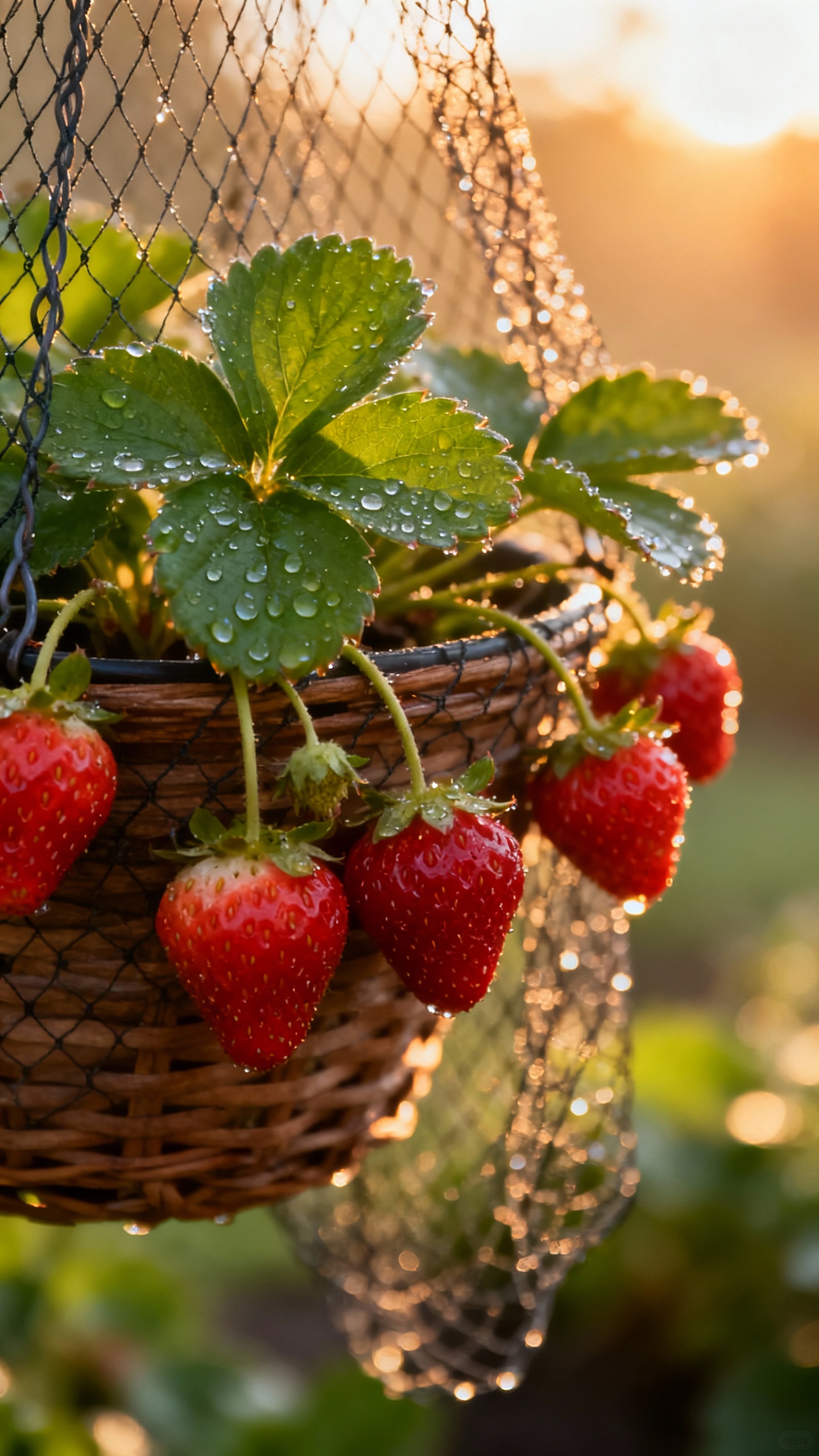
Planting: Don’t Bury the Crown (Seriously)
Strawberries hate two things: deep planting and drought. Let’s set them straight.
- Timing: Plant early spring in most climates.
In warm zones, you can plant fall for a fast start.
- Prep: Water the plants before planting so roots don’t go in thirsty.
- Depth: Place the plant so the crown (that knobby center where leaves sprout) sits exactly at soil level. Burying the crown = rot city. Exposed roots = sulking.
- Mulch: Add straw, pine needles, or shredded leaves.
Mulch keeps fruit clean, soil moist, and slugs mildly annoyed.
Runners: Friends or Foes?
June-bearers send out lots of runners (baby plants on stems). In beds, let 1–2 runners root per plant to fill your patch, then trim extras. In containers, snip most runners so the mother plant focuses on fruit, not baby-making.
Water and Food: The Sweetness Formula
Want sugar-loaded berries?
Manage water and feeding like a pro.
- Water: Aim for 1–1.5 inches per week, more in heat. Keep soil consistently moist, never soggy. Water at the base, not over the leaves.
- Fertilizer: Use a balanced organic fertilizer at planting.
Then feed lightly every 4–6 weeks during the growing season.
- Container hack: Add liquid seaweed or fish emulsion at half-strength every 2–3 weeks. Small doses, big flavor.
FYI: Over-fertilizing (especially with lots of nitrogen) grows huge leaves and meh berries. Don’t do it.
Flowers, Fruit, and Smart Pruning
Your first year sets the tone.
- First-year flowers (ground beds): Pinch off flowers for the first 4–6 weeks after planting.
Plants build roots, then fruit like champs later.
- Containers: With day-neutral types, you can let early flowers stay—just don’t expect giant berries at first.
- Clean-up: Remove old, yellowing leaves and dead flower stalks to improve airflow and reduce disease.
Protecting Ripening Fruit
– Slide mulch under fruit so it doesn’t touch wet soil. – Use bird netting if feathered thieves scope your balcony. – In slug-prone areas, try copper tape around pots or iron phosphate bait. No judgment—strawberries bring out the pirates.
Pests, Problems, and Easy Fixes
Strawberries don’t want drama, but sometimes you get some.
- Gray mold (Botrytis): You’ll see fuzzy gray on berries in humid weather. Fix with better airflow, morning watering, and mulch.
Remove infected fruit fast.
- Powdery mildew: Leaves look dusty. Space plants, avoid overhead watering, and consider a potassium bicarbonate spray.
- Aphids/spider mites: Sticky leaves or webbing? Blast with water, then use insecticidal soap or neem.
- Root issues: If plants wilt despite moist soil, check drainage.
Compacted or waterlogged mix = sad roots.
Pro move: Rotate where you grow strawberries every 3 years if you use beds. Avoid planting where tomatoes, peppers, or potatoes grew recently—they share soil diseases.
Harvest Like You Mean It
Berries don’t continue to ripen after picking, so wait for full color. Taste-test one—if it’s sweet and fragrant, game on.
- How to pick: Grab the stem just above the berry and snap it off.
Avoid yanking the fruit itself.
- Timing: Pick in the morning when berries are cool and firm. Eat the same day for max flavor.
- Storage: Don’t wash until right before eating. Store unwashed in a breathable container in the fridge for 2–3 days.
IMO: Warm, just-picked strawberries don’t belong in the fridge.
They belong in your mouth.
Overwintering and Keeping Them Going
Want strawberries again next year? Easy.
- In-ground: After the season, trim back old leaves, keep the crown intact, and mulch with 2–4 inches of straw or pine needles before hard freezes.
- Containers: Move pots against a wall, wrap them with burlap or bubble wrap, and mulch the top. In very cold zones, tuck pots in a garage or shed where temps stay just above freezing.
- Rejuvenation: Replace container plants every 2–3 years.
Yields drop as plants age.
FAQs
Can I grow strawberries indoors?
You can, but you’ll need strong grow lights (12–14 hours daily) and a day-neutral variety. Indoor strawberries often taste less sweet because light intensity drives flavor. If you can give them a sunny balcony or window box, do that instead.
How many plants do I need for a decent harvest?
For snacking, 3–5 day-neutral plants in containers will keep you happy.
For baking and bigger bowls, plan 10–15 plants per person in a small bed. Scale up if you want jam-level abundance.
Why are my strawberries small?
Common culprits: not enough sun, inconsistent water, plants too young, or too many runners stealing energy. Trim runners, feed lightly, and make sure they get 6–8 hours of direct sun.
Also, day-neutral varieties usually give smaller but steady berries—trade-offs!
Do strawberries need pollinators?
They’re self-fertile, but bees and other pollinators improve yield and berry shape. On balconies, give the flowers a gentle tap or use a soft brush to move pollen if you notice misshapen fruit. Still, even a breezy day helps.
When should I replace my plants?
In containers, refresh every 2–3 years.
In garden beds, let a few healthy runners replace older plants annually and remove the seniors. Younger plants = bigger, tastier harvests.
What’s the best variety for containers?
Go day-neutral. ‘Albion’ for firm, sweet berries; ‘Seascape’ for reliable performance; ‘Mara des Bois’ for wild-strawberry flavor that smells like a dessert menu.
Conclusion
Strawberries aren’t fussy—just give them sun, drainage, and steady moisture, then let them show off. Pick the right type, plant the crown at soil level, keep runners in check, and you’ll eat like royalty from a pot or a tiny patch.
Grow a few plants this season and get ready for that first bite that makes you forget store-bought ever existed. Your future self—mouth full of berries—will say thanks.
